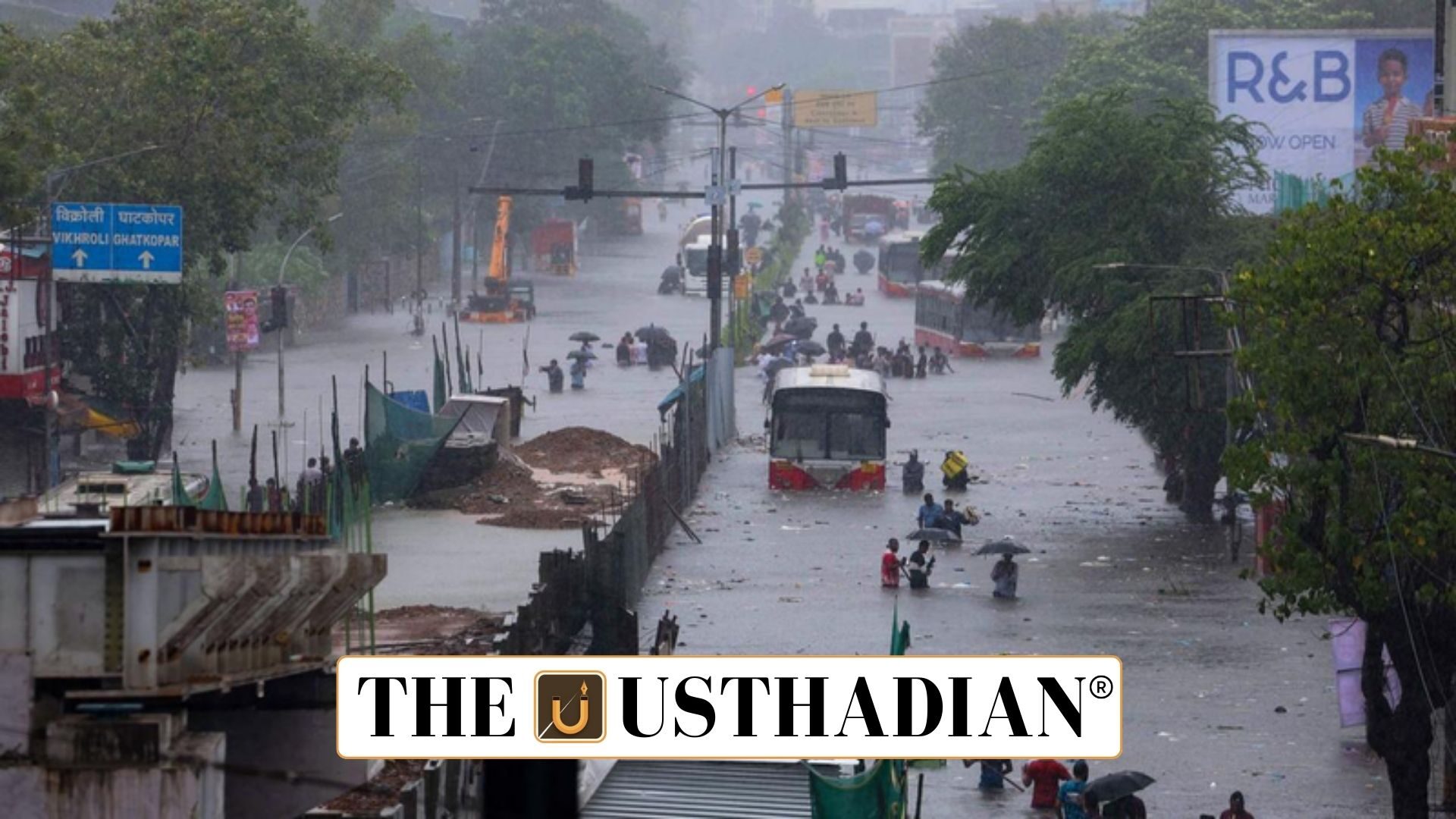Torrential rains over Mumbai
Mumbai’s Rainfall Emergency and the Climate Change Link: In mid-August 2025, Mumbai was lashed by more than 800 mm of rainfall within four days, well above its monthly average. The India Meteorological Department (IMD) issued an orange alert as rainfall continued without relief. The unusual intensity was fuelled by several simultaneous systems—low pressure over Vidarbha, a circulation in the Northeast Arabian Sea, a depression in the Bay of Bengal, and an active monsoon trough along the coast.
Static GK fact: The IMD, India’s primary forecasting body, was founded in 1875.
Climate influence on rainfall patterns
Scientists highlight that climate change has worsened rainfall extremes along India’s west coast. Warmer Arabian Sea waters and heat build-up over the Middle East have led to increased evaporation and moisture inflow, strengthening monsoon showers. Studies reveal that almost half of the recent rise in rainfall in northwest India and Pakistan can be attributed to rapid Middle East warming, often described as giving a “steroid boost” to the monsoon.
Static GK Tip: The Paris Climate Agreement of 2015 seeks to restrict global temperature rise to below 2°C.
Consequences for Maharashtra and Mumbai
The downpour inundated nearly 10 lakh acres of farmland in Maharashtra. Mumbai recorded its wettest August in years, following an unusually dry July—the lowest since 2015. Roads, trains, and housing colonies were submerged, bringing life to a standstill. At least 15 fatalities occurred due to rain-related accidents. This disaster underscores how megacities remain exposed to escalating climate risks.
Static GK fact: Mumbai, India’s financial hub, officially adopted its present name in 1995.
Strengthening alerts and public safety
Experts stress the expansion of early warning mechanisms to reduce loss of life and damage. IIT Bombay’s Flood Monitoring System is already providing real-time alerts to assist local authorities. Effective collaboration between weather agencies, civic bodies, and community networks is essential. Mapping flood-prone zones and upgrading drainage systems are central to flood mitigation efforts.
Static GK fact: Established in 1888, the Brihanmumbai Municipal Corporation is the wealthiest civic body in India.
Building resilience for future risks
Long-term solutions require scientific planning and technology integration. The Council on Energy, Environment and Water (CEEW) has created flood indices and rainfall frequency models for Mumbai and nearby regions. Increasingly, AI and machine learning are being deployed to reinforce critical infrastructure against climate risks. Researchers caution that extreme rainfall incidents will become more regular, making adaptive urban planning an unavoidable priority.
Static GK fact: The National Disaster Management Authority (NDMA) was constituted in 2005 under the Disaster Management Act.
Static Usthadian Current Affairs Table
Mumbai’s Rainfall Emergency and the Climate Change Link:
| Topic | Detail |
| Rainfall in Mumbai August 2025 | Over 800 mm in four days, exceeding monthly average |
| IMD alert | Orange alert issued for heavy rainfall |
| Weather systems | Low-pressure over Vidarbha, Arabian Sea circulation, Bay of Bengal depression, Monsoon trough |
| Climate factor | Warming of Arabian Sea and Middle East increases rainfall intensity |
| Agricultural impact | 10 lakh acres of cropland submerged in Maharashtra |
| Human impact | At least 15 deaths reported in Mumbai due to rains |
| Early warning | IIT Bombay’s Mumbai Flood Monitoring System provides real-time data |
| Urban planning | CEEW flood risk indices and AI-based resilience tools developed |
| Historical fact | IMD founded in 1875, NDMA in 2005 |
| City governance | BMC, established 1888, is India’s richest civic body |








